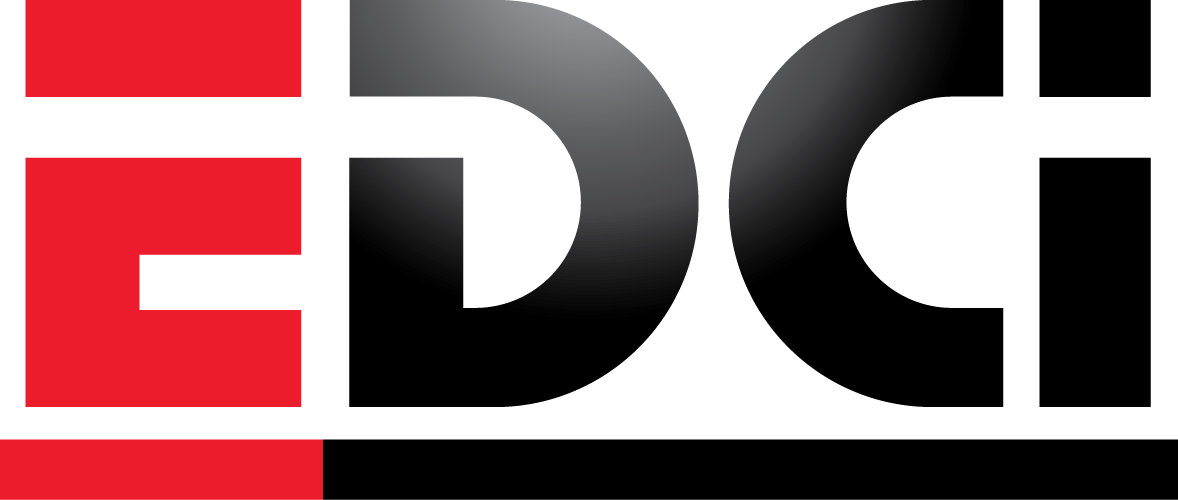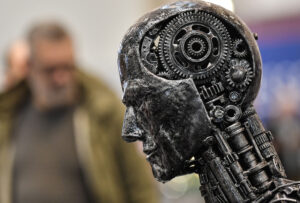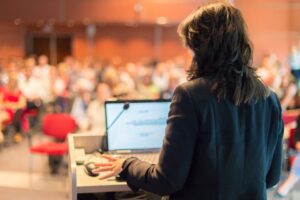September 2023 Tech Upload
 The NEW Digital Alliance would like to thank
The NEW Digital Alliance would like to thank
EDCi and Fox Valley Technical College (FVTC)
for their support as a Strategic Level investor!
NEW Digital News
 Wow, what an event!
Wow, what an event!
Thank you to those of you who attended our NEW Digital Alliance Tech Summit 2023 on Generative AI on August 22. The energy, conversation, learning and networking were exactly what we were looking for when planning this event. We had 230+ people in attendance and you are a large part of making this event a success. We’d like to once again thank our speakers Carl Deal – Gartner, Matt Adamczyk – Microsoft, Elaine Stephens – Google, and Adam Shea – TEKsystems for sharing their expertise and knowledge with us.
We’d also like to thank both our NEW Digital Alliance Investors and our event sponsors, Microsoft, Faith Technologies Inc., Thrivent, ServiceNow, CoreBTS, and CDW for their support of this even
Heartland Business Systems Invests in Young Talent
Young talent plays a vital role in the success and growth of organizations across all industries. These young professionals can bring fresh perspective, diverse thinking, innovation, skill diversity, energy, and so much more! At Heartland Business Systems (HBS), we strongly believe in the development of young talent within our organization, and within our community.
Over the past few years, HBS has made a tremendous effort to grow student outreach beyond college campuses. This has not only helped with educating local high school students about future career opportunities at HBS, but also has helped students understand the various career paths in Information Technology. The types of activities/events HBS participates include:
- Microsoft Teals Mentorship
- Youth Apprenticeships
- Highschool Mock Interviews
- Onsite Visits to HBS
- Classroom Presentations
- Job Shadows
- Highschool Scholarship
- Future Fox Cities
- And More!!
Involvement in these high school programs also provides professional development opportunities for our team members. Jessica, who has worked with our Youth Apprentices for 2 years states: “Working with the YA program has given me an opportunity to impact our future leaders, but more importantly I think, it has taught me how to be patient, give constructive criticism, and understand how to be a better teacher and leader”.
Prevent Recycling Fires By Safely Disposing Of Used Batteries
MADISON, Wis. – The Wisconsin Department of Natural Resources (DNR) reminds the public of the dangers of throwing rechargeable batteries, electronics and other materials that could cause a fire in trash or recycling bins.
In the last month, there have been large, damaging fires at multiple Wisconsin recycling facilities. While it is hard to pinpoint the exact cause of each fire, many batteries, especially powerful lithium-ion batteries found in many electronics, can cause fires when not disposed of properly. These batteries hold a considerable charge even when they no longer provide enough energy to power the device, and when damaged, they can spark or heat up and cause a fire.
“It only takes one lithium-ion battery to cause a huge fire and put workers and fire crews at risk,” said Sarah Murray, DNR E-Cycle Wisconsin coordinator. “Recycling facilities that handle cans, bottles and paper are not designed to handle batteries and electronics. Paper, cardboard and other material can easily catch fire with a spark from a damaged battery or rechargeable device.”
If not caught early, these fires can quickly spread and injure workers or firefighters, cause major damage to equipment, or even destroy an entire facility. In the past month, fires have caused severe damage at recycling and solid waste facilities in Columbia County and Milwaukee.
“When you put electronics or rechargeable batteries in your recycling or trash container, you’re putting workers and facilities at risk,” said Greg Kaminski, Columbia County solid waste director. “Taking batteries and electronics to a drop-off site may be an extra step, but it’s really important.”
Embracing the Next Generation: How to Welcome Gen Z to the Workplace
KI – July 2023
Explore insights from industry experts on the next generation to join the workforce and gain a better understanding of what Gen Z values as you prepare for their arrival to the office.
This year, we partnered with ThinkLab for their fourth annual Design Hackathon to explore the ripple up effect of Gen Z and its impact on the future of work. At NeoCon 2023, we had the pleasure of hosting a panel of ThinkLab experts from four of Interior Design’s “Top Giants,” including AECOM, CannonDesign, IA Interior Architects, and DLR Group. The esteemed panelists covered everything from techniques for improving mentorship to strategies for creating a culture of retention.
Below, we share our top takeaways that will help prepare you for Gen Z’s transition to the workplace.
Navigating the New Workforce
Members of Gen Z were born between 1997 and 2012. The youngest Gen Zers are still in school, while the oldest are just beginning their first jobs. Gen Z is expected to make up 30% of the workforce by 2030.
NCWIT Aspirations in Computing Awards Now Open
NCWIT Aspirations in Computing (AiC) offers four distinct awards that honor aspirations, abilities, technical accomplishments and influential guidance. Starting September 1st, the NCWIT AiC High School Award and AiC Educator Award application periods officially open!
Aspirations in Computing (AiC) provides encouragement, enables persistence, opens doors, and changes lives for women in technology from K-12 through career. For nearly 20,000 technical high school and college women, Aspirations in Computing (AiC) has been key to answering these questions. This welcoming, supportive community is the largest of its kind. With proven methods, NCWIT changes what’s possible for women in technology by offering the kind of encouragement that conquers isolation, builds in long-term motivation, opens doors—and changes lives.
NCWIT is a non-profit community that convenes, equips, and unites change leader organizations to increase the meaningful participation of all women — at the intersections of race, ethnicity, class, age, sexual orientation, and disability status — in the influential field of computing, particularly in terms of innovation and development.
Regional News
Gov. Evers: Signs Exec Order creating task force on workforce & AI
MADISON — In his latest effort relating to the state’s workforce, Gov. Tony Evers today signed Executive Order #211 creating the Governor’s Task Force on Workforce and Artificial Intelligence. The move comes as Gov. Evers announced earlier this month he is calling a special session of the Wisconsin State Legislature to take up his comprehensive plan to address the state’s longstanding workforce challenges. This task force will gather and analyze information and produce an advisory action plan to identify the current state of generative artificial intelligence’s (AI) impact on Wisconsin’s labor market and develop informed predictions regarding its implications for the near term and future. The action plan will also identify how these workforce impacts may affect Wisconsin’s key industries, occupations, and foundational skillsets, explore initiatives to advance equity and economic opportunity in the face of these changes, and based on the impacts identified, recommend solutions related to workforce development and educational systems.
“Wisconsin is ready to pursue and advance solutions that will ensure the state can take on the workforce challenges that may come with a transformative technology like artificial intelligence and embrace a future where all Wisconsinites, including workers, employers, and job seekers, benefit from a dynamic, growing economy that increases efficiency with the adoption of new technology,” said Gov. Evers. “Establishing this task force will be critical in understanding, adapting to, and capitalizing on the transformations AI will bring, ensuring Wisconsin’s workforce and industries remain steady, stable, and robust in the face of technological advancement.”
AI systems being produced today can learn from data without being explicitly programmed, create new content, predict future outcomes, and have the potential to reshape entire labor markets. Today, AI is increasingly being used in a range of industries important to Wisconsin, including manufacturing, healthcare, education, transportation, agriculture, and more. Yet, due to the novelty of the technology that is being developed and implemented, many Americans are concerned with or apprehensive of this emerging technology, with a Forbes 2023 survey reporting that more than 75 percent of “consumers are concerned with misinformation from artificial intelligence tools.”
As the state continues ongoing efforts to address Wisconsin’s longstanding, generational workforce challenges, the Governor’s Task Force on Workforce and Artificial Intelligence will help ensure that Wisconsin remains competitive by establishing best practices for the implementation and utilization of AI technologies and identifying potential impacts of AI across industries, occupations, and skillsets with an eye toward greater equity and economic opportunity so all workers, employers, and job seekers in Wisconsin have the opportunity to benefit from this evolving technology.
What does AI mean for women in tech in Wisconsin?

July 27, 2023
By Gaby Vinick
Rise of artificial intelligence raises questions about how Wisconsin will address its potential to replace jobs, but many women in tech see it as a possible ‘door-opener’
While many people fear the rise of artificial intelligence, some in Wisconsin’s tech industry see it as an opportunity to bring more people from marginalized communities into the field.
Nadiyah Johnson, founder and CEO of the Milky Way Tech Hub — a group that primarily focuses on supporting women of color in tech in Milwaukee — said AI is not going away anytime soon. She described it as a possible “door-opener.”
“With AI, specifically, these robust language models, they can be leveraged to really open door career paths, not just in the field of technology, but in different spaces that typically marginalized communities did not necessarily have access to,” she said.
The technology is raising concerns over how Wisconsin will address its potential to replace and automate jobs. But Johnson and other leaders say that with intentional education, training and support, there’s an opportunity for women and people from marginalized communities to leverage the technology.
Artificial intelligence is a field of computer science that trains machines to perform complex tasks, with generative AI behind chatbots like ChatGPT. The technology can produce text, images and audio that appear to have been created by humans. Some experts have warned AI poses risks to humanity. And many employers see it as a more cost-efficient way to conduct business — ChatGPT has already replaced some jobs.
In Wisconsin, there are 87,082 jobs in the tech industry, according to a report this year from The Computing Technology Industry Association. Overall, the direct economic impact of the tech sector is estimated to be $21.1 billion.
Statewide, women make up about 28 percent of the tech workforce, according to the same report. That’s up slightly from the national average of 26 percent. Wisconsin’s Black population comprises 3 percent of the tech workforce, as does the Hispanic/Latino population.
Johnson said as a Black woman in STEM, she’s seen recent efforts focused on increasing representation for women in the field.
Reskilling needed for 40% of workforce because of AI, Report from IBM says

AUGUST 18, 2023 – Generative AI will require skills upgrades for workers, according to a report from IBM based on a survey of executives from around the world. One finding: Business leaders say 40% of their workforces will need to reskill as AI and automation are implemented over the next three years. That could translate to 1.4 billion people in the global workforce who require upskilling, according to the company.
Entry-level employees are expected to see the biggest shift and are already being affected, according to the report. It found that 77% of executive respondents say entry-level positions are already seeing the effects of generative AI, and that will intensify in the next few years. On the flip side, only 22% of respondents report the same for executive or senior management roles.
Will generative AI replace employees? The report found that a majority of executives, 87%, believe employees are more likely to be augmented then replaced. However, this varies across functions, with 97% of executives thinking employees in procurement are more likely to be augmented than replaced compared to 73% for marketing.
IBM’s survey included 3,000 C-suite executives from across 20 industries and 28 countries. It took place in December 2022 and January 2023.
To prepare for the future, IBM outlined some steps that firms may take, including:
- Redesign work, leading with the operating model. Rather than automating the same activities companies have always done, return to the drawing board to find a better way forward.
- Invest in talent as much as technology. Prepare the workforce for AI and other technology-based disruptions.
- Put skills at the center of workforce strategy. Leaders should be thinking about how to increase the overall technical acumen of their workforce.
- To give workers’ jobs more meaning, put employees in the driver’s seat. Automating tasks may enable employees to focus on what they are passionate about or free up time for skills development.
The Intersection of STEM and Design Thinking: A Powerful Approach to Learning
July 31, 2023
By Fotis Pantopoulos
I think we will all easily agree on the fundamental role of education in preparing for the future. Because education is the area that I have served for 33 years from different positions and in different fields and levels, this period I have chosen to present in my articles techniques and tools that I have developed in the last decade with the aim of facilitating educators and students in the way of thinking, teaching, and learning. One of these approaches that I am happy to see resonate in the educational community is Design Thinking. Although it can be applied in many fields, this time I present its coupling with STEM education.
In today’s fast-paced world, it is vital for students to develop skills that will prepare them for the future. STEM education has really gained significant recognition in recent years as it focuses on Science, Technology, Engineering, and Mathematics. However, I believe that there is the approach I mentioned above that complements STEM education and enhances its effectiveness: Design Thinking. So we will explore the intersection of STEM and Design Thinking and discuss how this powerful approach can revolutionize learning.
Understanding STEM and Design Thinking
STEM stands for Science, Technology, Engineering and Mathematics. Driven by the need to equip students with essential skills for the 21st century, STEM education emphasizes interdisciplinary learning and problem-solving. It encourages students to think critically, approach challenges analytically, and collaborate effectively. By integrating these disciplines, students are prepared to tackle real-world problems and contribute to innovation and progress. These characteristics of STEM education gave us the stimulus to choose it as the appropriate field for coupling with our work in Design Thinking.
Design Thinking, on the other hand, is an amazing human-centered “mechanism” for solving problems. We started dealing with this in 2007, after completing a cycle of 17 years of study at a Trainers’ School. It involves empathizing with end users, defining the problem, generating ideas, prototyping, and testing solutions. Design Thinking fosters creativity, encourages experimentation, and fosters a mindset of continuous improvement. It is a holistic approach that emphasizes not only finding solutions but also understanding the needs and aspirations of individuals.


